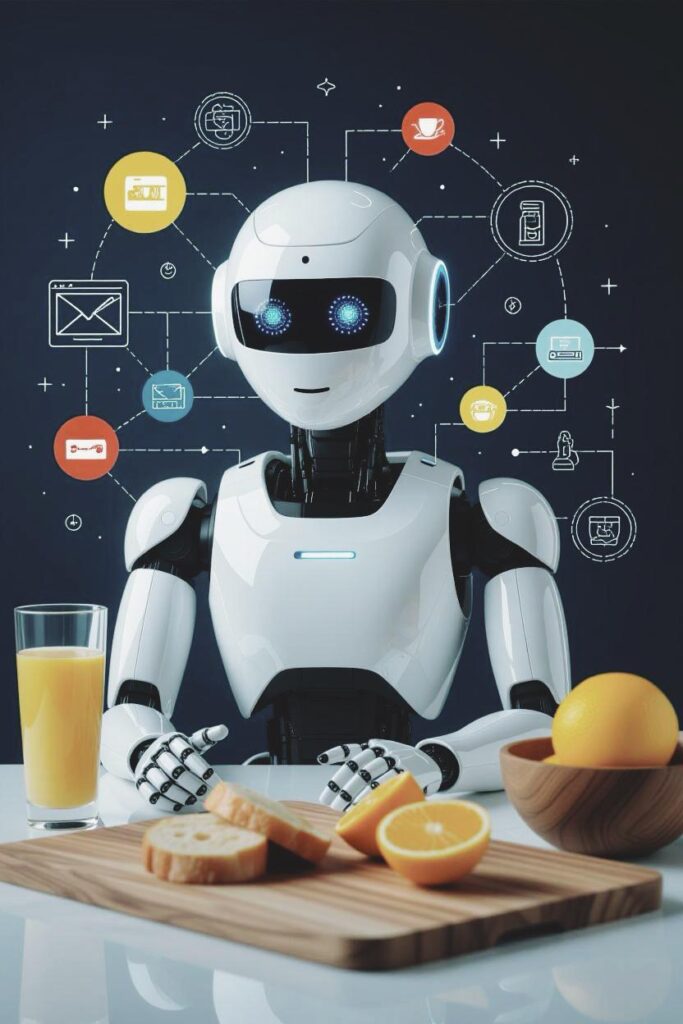Generative AI is the new industrial revolution
The term AI is of recent origin, but the conceptual roots of artificial intelligence stretch back to thousands of years. The idea of intelligent machines and artificial beings has fascinated humans since the dawn of history. In recent history, Al-Jazari (1136-1206), an inventor from Mesopotamia built programmable automata including water clocks, mechanical musicians, and automated servants. Leonardo da Vinci (1452–1519), designed a mechanical knight that could sit, wave its arms, and move its jaw. It was a proto-robot.
The journey from mythical and philosophical ideas to programmable mechanical systems to artificial intelligence to Gen AI, is an interesting saga of human imagination, ingenuity and achievements, spanning across millenia.
So what is Generative AI?
Generative AI (Gen AI) attempts to simulate human creativity and ingenuity. It can generate text, music, videos and 3D models. Gen AI refers to artificial intelligence systems that can create new content like; text, images, music, code and video. Based on patterns learned from existing data, it can also generate 3D models. While AI focuses on classification and prediction, Gen AI produces original outputs that mimic human creativity.
Gen AI is redefining creativity, reshaping industries and raising new questions and concerns about security and ethics. As things are, the business processes stand transformed. Startups have a whole range of new business tools and strategies. They can now stay lean and perform like heavy weights in the new landscape. Gen AI has also created potential risks in cybersecurity. This aspect also has to be factored in.
Evolution from traditional AI to Gen AI
Artificial Intelligence, as a technology, began with symbolic logic and rule-based systems in the 1950s and 60s. It later evolved through machine learning techniques which allow systems to learn from data without explicit programming. Traditional AI no doubt outperformed in pattern recognition, classification, recommendation systems and optimization tasks. But times changed. AI, which was spectacular and overwhelming in the beginning, appeared to shrink in scope in the face of rapidly evolving trends and technologies. AI needed a massive overhaul.
It eventually happened. AI took the quantum leap with the development of deep learning, especially neural networks that emulate the architecture of human brain. This not only enabled machines to analyze data, but also to generate new content based on learned patterns. Gen AI was born.
Developments like Generative Adversarial Networks (GANs) and transformers (GPT, BERT) laid the foundation. OpenAI’s GPT-3 and GPT-4, Google’s Gemini, and other large language models (LLMs) have enabled AI to create original text, images, code, music, and also video. Today, Gen AI tools are embedded in applications across almost every domain. Listed below are some of the areas and the relevant tools.

Language: ChatGPT, Google Gemini, and Claude can write articles, draft emails, translate languages and, surprisingly, compose poetry.
Visual Art: DALL·E, Midjourney, and Stable Diffusion generate both realistic or artistic images from text prompts.
Audio and Video: Gen AI tools are now creatimg music, clone voices and generating synthetic videos or deepfakes.
Code Generation: GitHub Copilot and similar tools are assisting developers to write functional code through plain language instructions.
Enterprise Use: Gen AI is transforming marketing, design, customer service, documentation and much more. From a niche innovation, Gen AI is now a mainstream capability integrated into cloud ecosystems,
enterprise platforms and productivity tools. Gen AI is redefining business models, workflows, and CRM. Some notable impacts are listed below.
Increased Efficiency and Automation
Gen AI can write reports, generate content, analyze customer queries, and even develop product descriptions, thus leaving more time to humans for strategic work.
Enhanced Customer Experience
AI chatbots and virtual assistants are more conversational because of huge information resources at their disposal and instant access. They are more responsive than ever. This, together with 24/7 support, always crisp and untiring, improves customer satisfaction.
Product and Service Innovation
Businesses can now use generative models to design prototypes and test product variants virtually, thus personalizing offerings at scale.
Cost Reduction
Gen AI-driven automation cuts operational costs across HR, finance, marketing and R & D.
Data-Driven Creativity
Gen AI can design marketing campaigns, personalized emails, social media content and advertising visuals, all tailored for specific audiences through advanced analytics.
How Startups Can Benefit from Generative AI?
For startups, Gen AI is the launch pad. With their limited resources but high agility, startups can exploit Gen AI potential in transformative ways as detailed below.
Product Development
Gen AI can quickly prototype Minimum Viable Products and save months of development.
Lean Teams, Broad Capabilities
Startups can replace or strengthen roles with AI. Be it a content writer, designer, customer support agent, or marketing analyst.
Hyper-Personalization
Through Gen AI, even small businesses can offer personalized experiences and interactions, hitherto limited to tech giants.
New Business Models
Startups can tailor new businesses models around Gen AI, using custom GPT agents, AI propelled SaaS platforms or creative tools for niche industries.
Investor Attraction
The Gen AI climate enables startups to attract faster funding due to their lean stature, agility and quick adoption capabilities across a range of tools and technologies.

Cybersecurity Concerns: Will Gen AI enhance cybercrime lethality?
Gen AI is the gateway to unprecedented innovation and creativity. It is also heavens for the ungodly. They can use AI to create ingenious cybersecurity threats.
AI-Generated Phishing Attacks
Phishing attacks can get more damaging because Gen AI can create convincing context-aware phishing emails in any language.
Deepfakes and Voice Cloning
Realistic audio/video impersonations of state functioneries, executives, politicians, celebrities and public figures can be used in fraud, disinformation or blackmail.
Malicious Code Generation
Code generators can be used to create malware, trojen horses and play havoc with businesses and other organizations.
Automated Social Engineering
AI chatbots can be trained to deceive victims, steal sensitive data by mimicking human behavior convincingly and gain the confidence of the victims for nefarious designs.
Data Poisoning and Model Exploits
Cyber attacks may corrupt data or manipulate AI outputs or gain access to systems with malicious intent.
Governments, enterprises, and developers are working to deploy safeguards to counter the threats. Efforts include watermarking AI-generated content, detection of bias and access controls. An all out and never ending war between cybercriminals and security experts is raging and expected to gain ferocity because the stakes are high.
Conclusion
Generative AI is the quantum leap in artificial intelligence. The reactive systems are now creative and have become autonomous outfits. Gen AI is an engine for businesses to innovate and evolve in efficiency. It is also a catalyst for startups.
Close on the heels of this immense power, come the darker aspects. Ones that could boost cyber threats and misinformation if allowed to go unchecked.
Evolving with this future will require technical tools and ethical foresight along with responsible governance and global collaboration. The future of Gen AI would depend on what it can do, as also on how prudent we are to employ it.
Written By: Paul Fedrick N.



